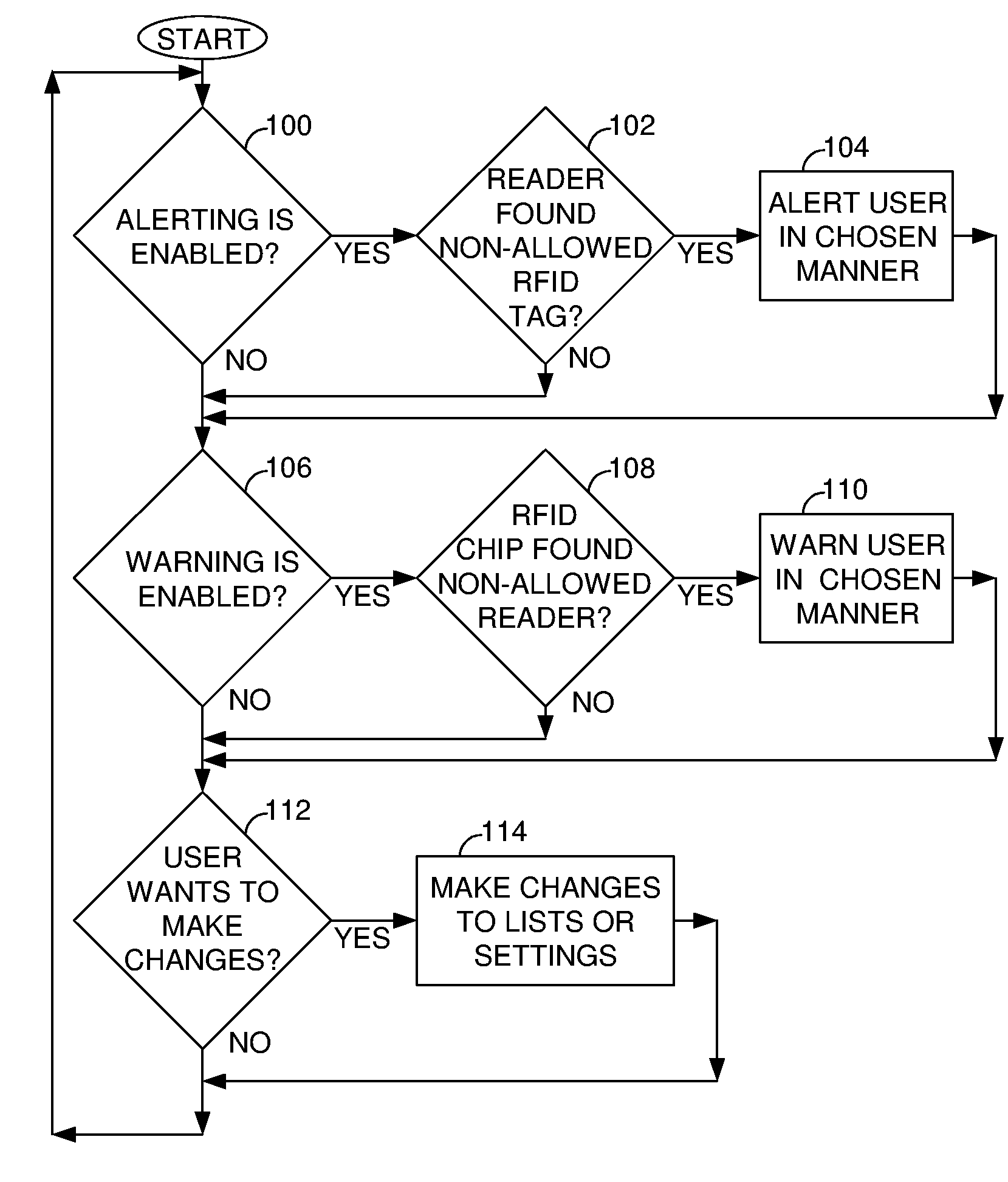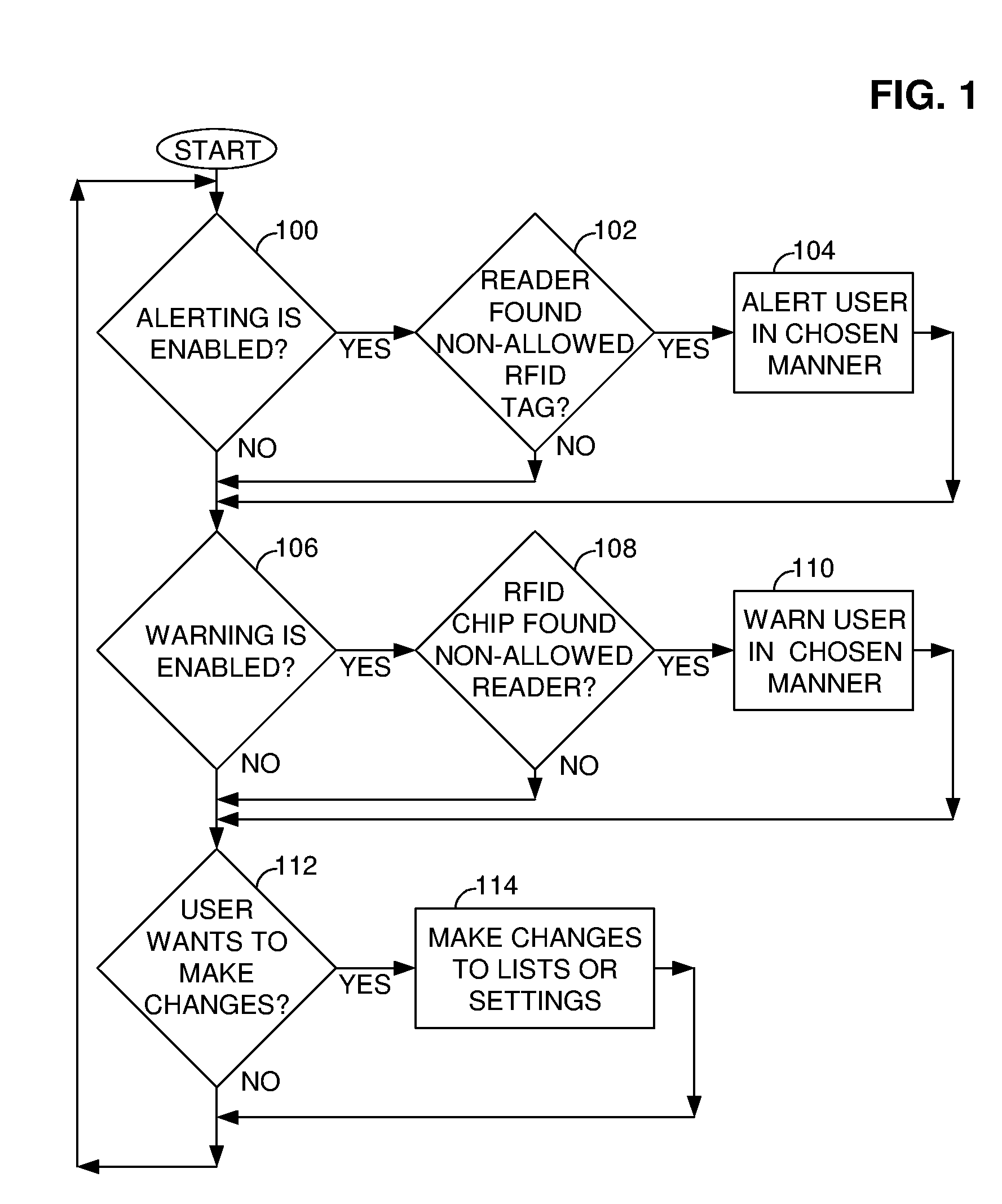Anti-tracking system to ensure consumer privacy
a technology of anti-tracking system and consumer privacy, which is applied in the field of detection, counting, and location of radio frequency identification tags, can solve the problems of serious loss of consumer privacy, inability to solve the problem of rfid privacy, and large size of rfid tags detected with handheld readers
- Summary
- Abstract
- Description
- Claims
- Application Information
AI Technical Summary
Benefits of technology
Problems solved by technology
Method used
Image
Examples
Embodiment Construction
[0015] In an exemplary embodiment, the present invention is a system, method, and computer program product for protecting a user's privacy by scanning the user's immediate environment and alerting the user when an active tracking device is found in the user's proximity. For instance, an RFID tag may be in the clothing the user is wearing, a bag the user is carrying, or the money the user has in a wallet.
[0016] The invention includes a portable battery-powered RFID reader that activates any nearby RFID tags and thus helps the user determine whether a nearby item or person is subject to tracking (i.e. privacy violation). A low-power miniature reader can be integrated into a key chain, a credit card, belt buckle or other device that a consumer might typically carry. The power required to read an RFID tag is strongly dependent on the distance separating the tag and the reader, so smaller, lower power readers will have more limited ranges. However, a loop antenna can be embedded in a us...
PUM
 Login to View More
Login to View More Abstract
Description
Claims
Application Information
 Login to View More
Login to View More - R&D
- Intellectual Property
- Life Sciences
- Materials
- Tech Scout
- Unparalleled Data Quality
- Higher Quality Content
- 60% Fewer Hallucinations
Browse by: Latest US Patents, China's latest patents, Technical Efficacy Thesaurus, Application Domain, Technology Topic, Popular Technical Reports.
© 2025 PatSnap. All rights reserved.Legal|Privacy policy|Modern Slavery Act Transparency Statement|Sitemap|About US| Contact US: help@patsnap.com



